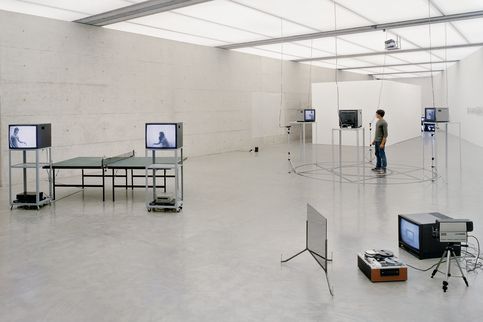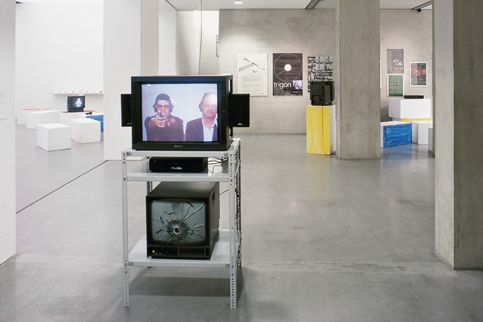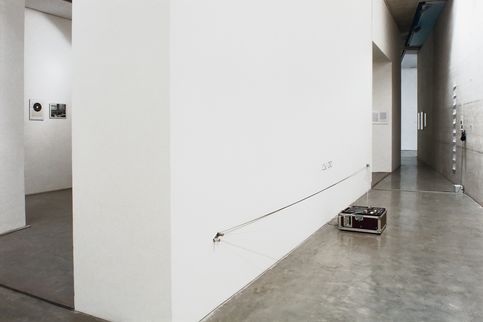RE-PLAY
Beginnings of International Media Art in Austria
Curator: Sabine Breitwieser
Co-Curator audio: Heidi Grundmann
Curatorial Assistance, Exhibition production: Nadja Wiesener, Rike Frank
Curatorial Assistance audio: Nina Kaltenbrunner, Elisabeth Zimmermann
This comprehensive project of the Generali Foundation explored the beginnings of art and electronic media in Austria. Presented for the first time were Austrian achievements in the international context and the ways in which they are networked. As an exhibition that had extended into TV, radio, and the Web, as well as an archive and an accompanying publication, Austrian artistic productions, exhibitions, and events, all primarily with international impact, have been documented and made accessible.
The rapid development of communication and recording technologies after World War II raised artists‘ interest in the aesthetic, political, and social influence of mass distribution and global communication. In the late sixties and early seventies, artists in Austria - some coming from action art and Expanded Cinema - started to work with audiovisual home technologies, which were then new on the market (video equipment, stereo recorders, audio cassettes). In doing so, Austrian media-art pioneers became fully integrated in an international information network on current art trends, gathering experience abroad and contextualizing their independent approaches in terms of those made by international artists, notably in Germany and North America.
From the plethora of exhibitions and symposia with prominent international participants, the "audiovisual messages" of 1973 from the "Trigon" series in Graz (Styria) are particularly noteworthy. It was the first international manifestation of video art in Europe, presenting for the first time a large selection of videos by U.S. artists in addition to projects by Austrian, Italian, and Yugoslavian artists (hence the "Trigon"). Central to the event were the following issues of dematerialized, mediatized art; making the relationship of artist and recipient dynamic, redefining notions of the work of art and thus of authorship, as well as developing alternative production and distribution channels. In the late seventies and early eighties, these issues took theoretical and practical shape in a number of international telecommunication projects, which were in part initiated in Austria.
Vienna, Graz (Styria), and Innsbruck (Tyrol) developed into important locations for many of the best-known international artists with a number of cross-border events on performance and media art, on art and art theory, in so-called information galleries and other non-profit institutions. At the same time, Austrian media artists were invited with increasing frequency to major international events abroad. In the late seventies and early eighties, a young generation of artists emerged in Austria, for whom working with diverse new media as well as participating in the international art scene was a matter of course. In 1979, the first Ars Electronica festival in Linz presented innovative approaches to art and technology for a broader local public and an international audience of art, science, and technology experts.
The Austrian Broadcasting Corporation (ORF), specifically the programs "Kunst-Stücke" and "Kunstradio," and Kunstradio-online served both as media outposts and as independent sections of the exhibition. In addition to features in the exhibition RE-PLAY, historical media-art works were broadcast on TV, radio, and the Internet; some as premieres. Works from the ORF video and audio archives were, in turn, represented in the Generali Foundation exhibition, as "Kunst-Stücke" and "Kunstradio" with special shows on location.
Apart from around thirty video and audio installations, the exhibition featured some 180 single-channel videos as well as audio works by twenty Austrian and fifty international artists. A large number of works have had to be restored or reconstructed.









